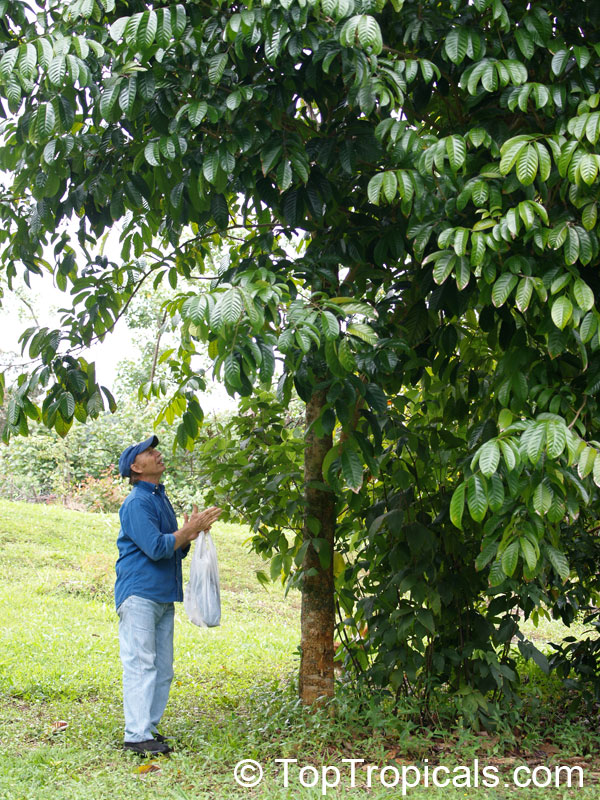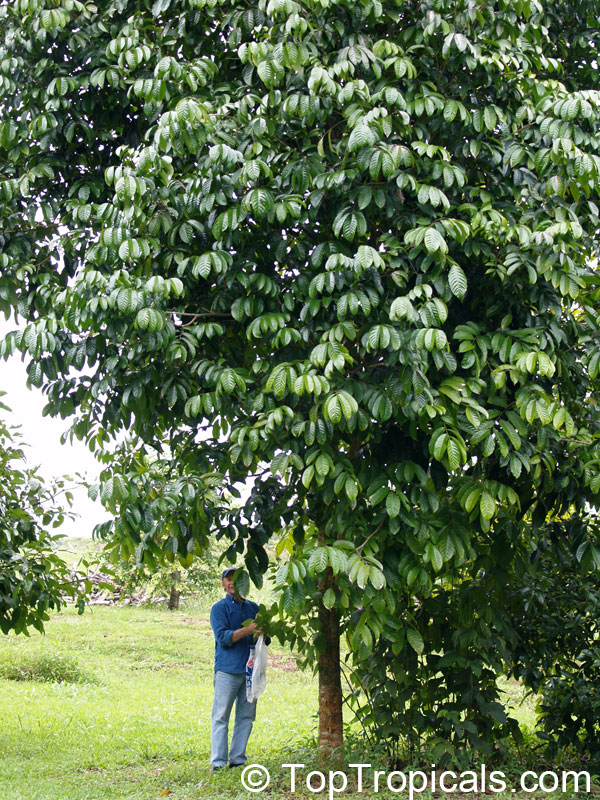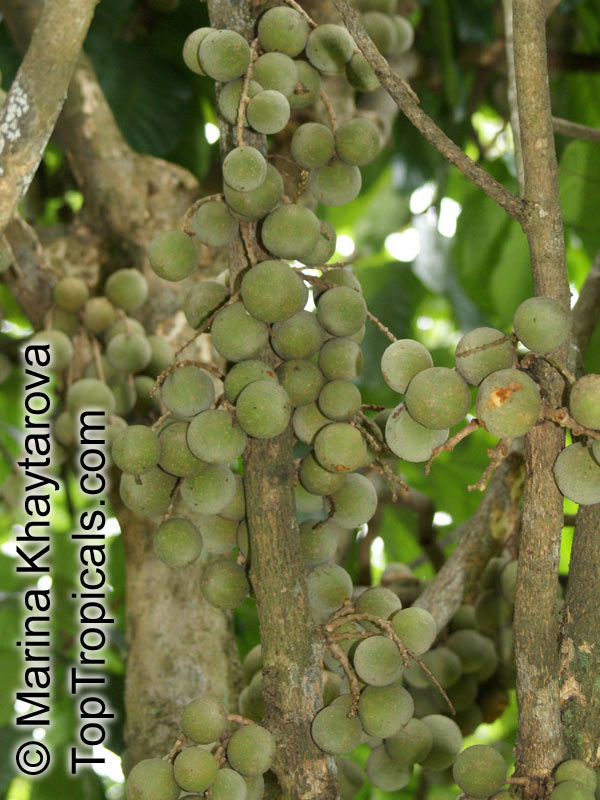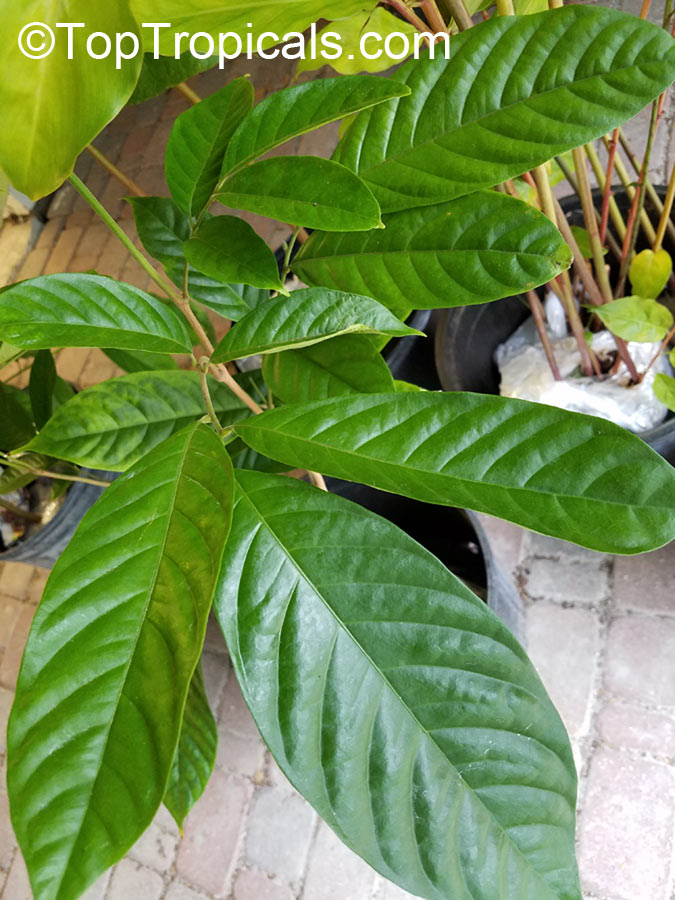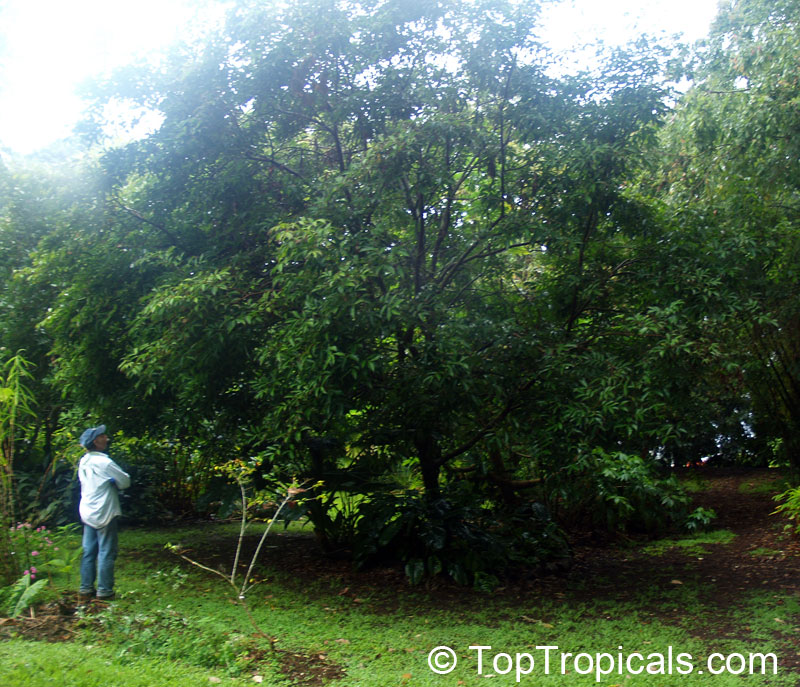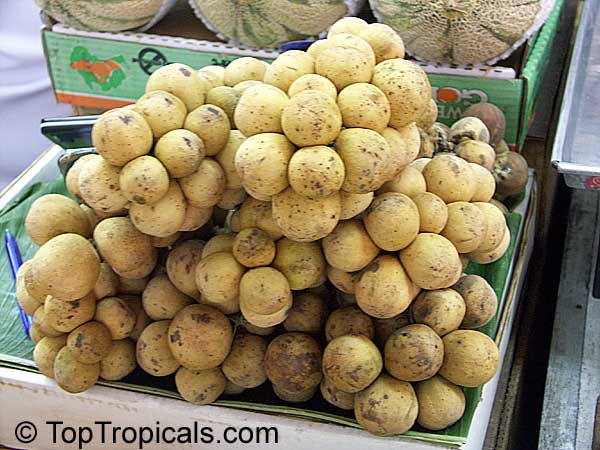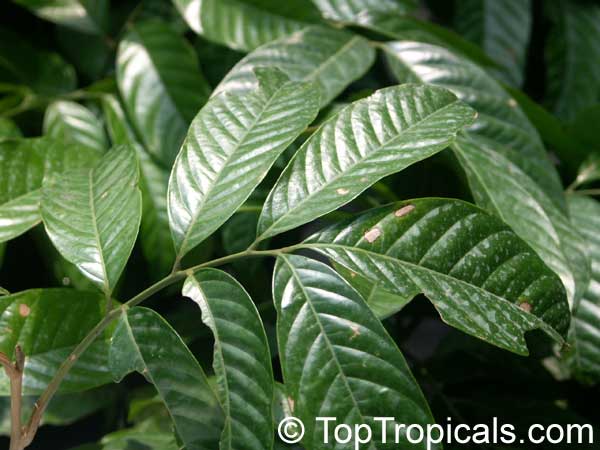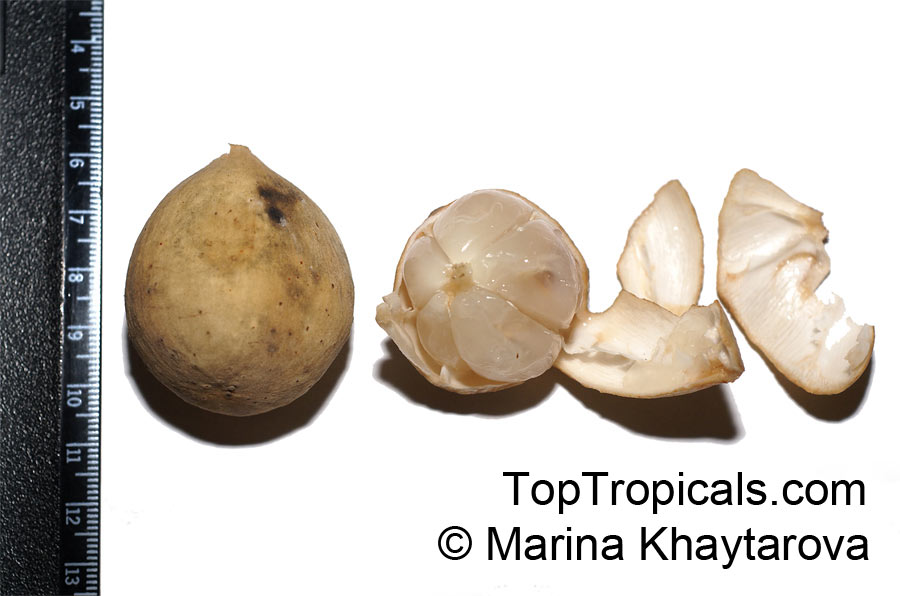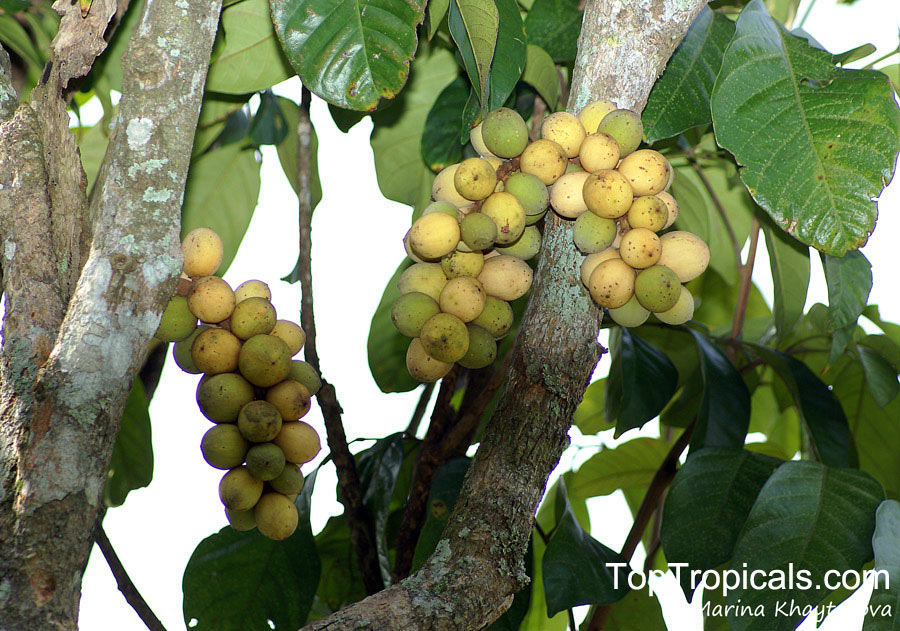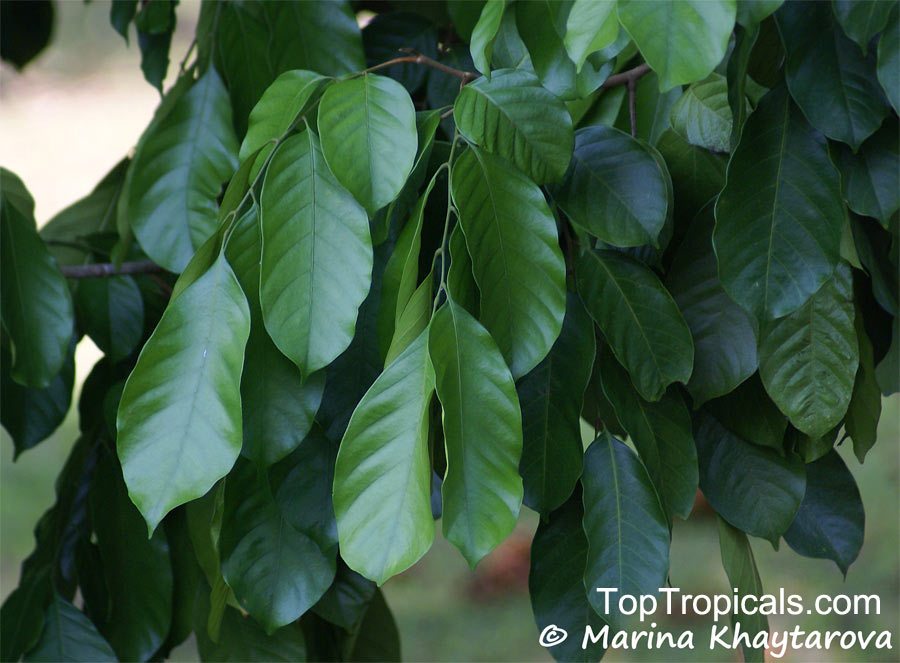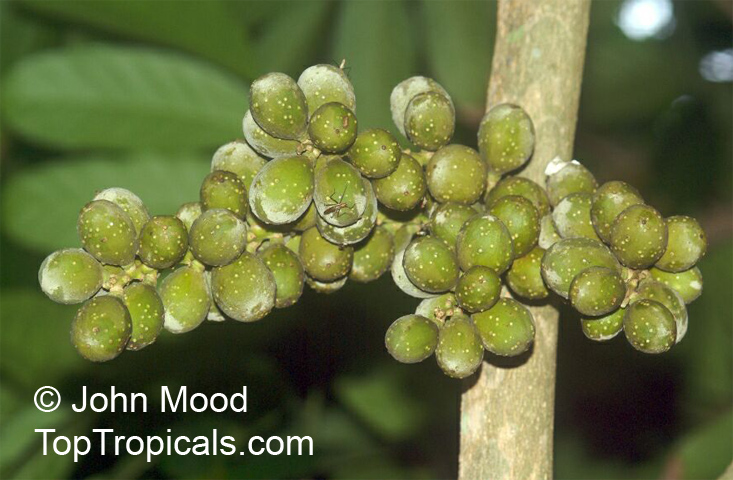Lansium domesticum (Langsat)
Top Tropicals Plant Encyclopedia
Botanical name: Lansium domesticum
Common names: Langsat, Longkong, Lanzones
Family: Meliaceae
Origin: Malaysia





The tree is erect with slender or spreading branches. It has irregular or systematical crowns and can reach 30-90ft in height. The leaves are pinnate with 5 to 7 leaflets. The flowers are small, white or pale-yellow and mostly bisexual. The fruits are oval, oval-oblong or nearly round and borne in cluster of 2 to 30. The fruit skin is greyish-yellow to pale brownish or pink, leathery, thin or thick and may contain milky latex. The fruits contain 5 or more segment of aromatic, translucent, juicy flesh with sweet to acid taste. Lansium is commonly propagated from seeds. The seedlings are generally fairly uniform. They can also be vegetatively propagated by grafting. This will shorten the juvenile phase. The seeds have a short viability period and must be sown within a few days after removed from the fruit. The growth rate of the seedlings are extremely slow, it takes two to three years before the seedlings are ready for planting. Shade must be provided for the young seedlings and wind-breaker should be available in windy area. Constant water supply is essential during the first two years of planting. Mulching is recommended. Lansium responds positively to irrigation particularly during the immature stage and fruiting period. In Southeast Asia it is sais that the langsats are planted not for oneself, nor for ones children, but for ones grandchildren. They are that slow to produce fruit when grown from seed. By grafting superior selections, we hope in this lifetime to enjoy the tart citrus flavor of the delectable, crisp flesh.


